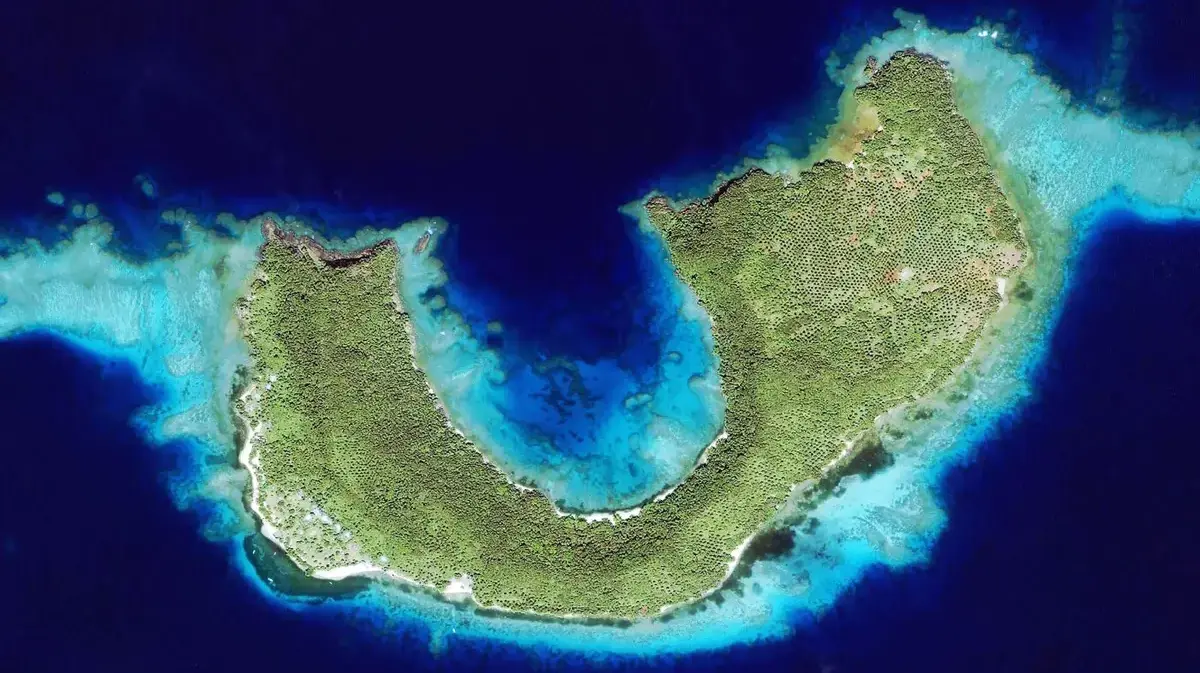The vast, magical expanses of the Pacific Ocean are filled with small but vibrant island nations like Tuvalu, Kiribati, and Fiji. Scientists from NASA’s Sea Level Change Science Group warn that these Pacific islands could face a sea level rise of at least 8 inches (20.32 centimeters) over the next 30 years.
The worrying thing is that even if our greenhouse gas emissions surge in the coming decades, this level of growth is inevitable and irreversible. These tropical paradises, home to millions of people, are rapidly changing under the relentless wave of anthropogenic climate change.
Ride the tides
This thought-provoking analysis of sea level rise in the Pacific Islands was not done on a whim. It is a direct response from NASA’s Sea Level Change Research Team, working alongside the U.S. State Department at the request of several Pacific islands, including Tuvalu and Kiribati.
So what are the results? High-resolution maps showing the potentially devastating high flooding, or “nuisance flooding” as they’re often called, that these islands could face by the 2050s.
The maps, released on September 23, offer a startling glimpse into what the future could look like under a variety of emissions scenarios, from best-case scenario to business as usual to worst-case scenario.
“Sea levels will continue to rise for centuries, causing more frequent flooding,” said Nadia Vinogradova Schiffer, who directs ocean physics programs in NASA’s Earth Sciences Division.
“NASA’s new flood forecasting tool shows what potential increases in flood frequency and severity will look like in the coming years for coastal communities in Pacific island nations.”
Mapping sea level rise in the Pacific Ocean
The mapping project, launched by researchers at the University of Hawaii in partnership with scientists at the University of Colorado and the Virginia Institute of Technology, initially focused on Kiribati, Tuvalu, Fiji, Nauru and Niue. The maps will help Pacific island nations decide where to direct their efforts to mitigate the effects of climate change.
Grace Malie, a youth leader from Tuvalu and a member of the Rising Nations Initiative, a United Nations-backed programme, emphasised the role of scientific data in effectively disseminating accurate forecasts of sea level rise. She said this information could also strengthen early warning systems, which are a major challenge for their country.
Prediction of future floods
The worrying finding is that by the 2050s, almost all Pacific island nations will see an increase in the number of flood days per year during high and low tides. For example, areas of Tuvalu that currently experience fewer than five high tides per year could experience an average of 25 high tides per year by the 2050s. Similarly, areas of Kiribati that experience fewer than five flood days per year today could experience an average of 65 flood days per year by the 2050s.
“Everyone (in Tuvalu) lives on the coast or along the coastline, so this affects everyone a lot,” Malie said, stressing, “I live in the reality of climate change.”
Pacific Ocean level rise deciphered
Even though we live in the same ocean, sea level rise does not affect all regions equally. Many factors, such as the topography of the coastline or how meltwater is distributed into the ocean, determine the extent of sea level rise in a given region.
“We always look at differences in sea level rise across different regions, but the numbers across the Pacific are surprisingly consistent,” said Ben Hamlington, a sea level researcher at NASA’s Jet Propulsion Laboratory in Southern California and leader of the sea level change science team at the agency.
The consequences of 8 inches (20.32 cm) of sea level rise won’t be the same for all countries. For some, that means intermittent flooding at the airport, for others, it means their neighborhoods being flooded for nearly six months. Hamlington also stressed the need for more comprehensive data.
The combination of satellite data on ocean levels, ground-based measurements of sea level at specific points, and improved knowledge of land topography can provide more accurate estimates of sea level rise.
But as Hamlington points out, there is a “real lack of data” in these countries.
Pacific islands, sea level rise and climate change
“The future of Tuvalu’s youth is already at stake,” Malie said, reflecting the urgency and concern of millions of people who call these Pacific islands home. He stressed that climate change is not just an environmental crisis.
This is a matter of justice, survival, and global responsibility. It seems the future has indeed arrived on the shores of these Pacific islands. But the question is, are we ready to meet it? These maps are available on NASA’s Sea Level Change website.













